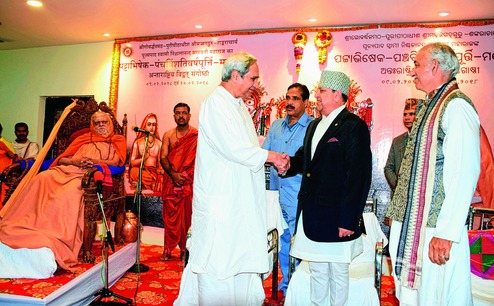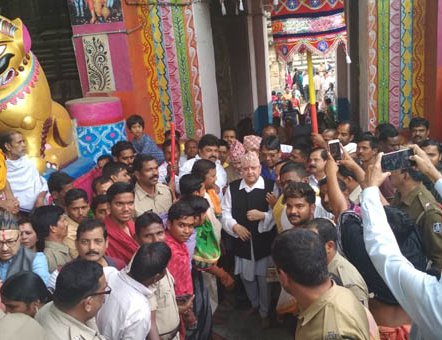RATHA YATRA IN KATHMANDU

Jagannath Rath Yatra which was stalled for three years owing to the COVID-19 pandemic was restarted with pomp and show in many parts of India and some places of the world where Hindus reside.But the one in Kathmandu is something different.
Hundreds of devotees walked into the streets of Kathmandu pulling the chariot to detour the city chanting hymns and slogans hailing Lord Jagannath. The International Society for Krishna Consciousness had organized the Jatra in Kathmandu which was last held in 2019 before the pandemic gripped the world.
After due rituals, the three Rathas of Lord Jagannath, Devi Subhadra and Lord Balabhadra were pulled. This festival takes place every year on the second day of the Shukla Paksha in the months of June or July. This year the festival falls on July 1.
Incidentally Nepal has an age-old relationship with Shree Jagannath. As per tradition, the King of Nepal is also a Sevak of Shree Jagannath, just as the Gajapati of Puri.The king of Nepal and his queen enjoy special privileges at the temple. As per the temple record of rights, the entire temple premises get washed – a ritual known as ‘soudha’, before the arrival of the Nepal royal couple. Authorities do not allow devotees to enter the temple premise. All the morning rituals of the temple are conducted in advance to facilitate them. Only a handful of temple servitors help the Nepal royal couple to perform rituals before the deities. The temple administration closes three gates and keeps open only the southern gate for the Nepalese king and queen to enter. Family priests of the king, known as ‘Lalmoharia Panda’, escort the couple to the sanctum sanctorum.
It is the Nepal king who has the exclusive privilege to perform rituals on the ‘Ratna Vedi,’ the throne of the deities inside the sanctum sanctorum. Except for a few senior temple priests, no other person is allowed to perform the ritual. This privilege of performing rituals in the Ratna Vedi (altar) is extended only to three people, Gajapati Maharaj of Puri, Shakaracharya of Puri and King of Nepal. Earlier, Kasturi, the famous perfume from the Kasturi deer found in Nepal, used to be supplied by the royal family for personal use of the deities. Lord Jagganath is considered to be a tribal God and also is treated like a human being.
Jagannath Temple, located in the very famous Kathmandu Durbar Square, is most famous for its architecture and religious significance. One thing that draws tourists in large numbers is the exquisite erotic carving all over the structure. It was built in the early 16th century during the reign of King Mahendra of the Mala dynasty and is one of the oldest shrines in the city. From what remains now, one can get a gist of how fascinating the structure would have been. It is a two-storey building raised over a platform and built in the traditional pagoda- style architecture mostly made of wood and bricks. Some parts of the temple were damaged in an earthquake in 2015. However, some portions have been restored and open for the tourists to explore.
Chinese traveler Fa Hien, who visited Odisha in the fifth century AD, writes about the various chariots of Buddha and other Gods being pulled along public roads – it is a tradition that is still practiced in Nepal, where god and goddesses are believed to be the different avatars of Buddha.

Officially monarchy has ended in Nepal. But King Gyanendra Bir Bikram Shah Dev continues to enjoy special religious rights as a “king” in Jagannath temple.
King Gyanendra had visited the Puri temple in 2003, nearly two years after the “palace massacre”, along with his queen Komal Rajya Laxmi Devi Shah to offer special prayers on the Ratna vedi inside the sanctum sanctorum. Gold rings and eyes for all the three presiding, a lotus made of gold, a Laximinarayan statue and other gold and silver ornaments and artifacts were offered by Gyanendra.
When the Nepal king and queen visit Puri, it is the Gajapati who welcomes them and accompanies the royal couple to the temple. Besides the royal couple enjoy all high level official etiquettes normally extended to a head of state.

Source: Himalayan News Chronicle

















टिप्पणीहरू